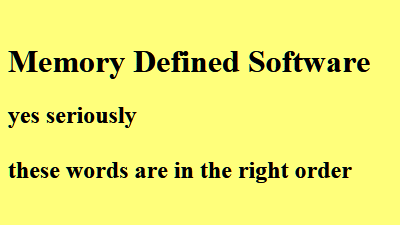|
|||||
| .. | ..... | ||||
|
|||||
| ..... | |||||
| SSD news SSD jargon the fastest SSDs 2.5" NVMe SSDs controllers for SSDs the top SSD companies endurance myths legends history of the SSD market will SSDs end bottlenecks? can you trust SSD market data? DWPD - examples from the market surviving SSD power loss - all SSDs branding strategies in the SSD market capacitor hold up extremes in 2.5" SSDs trends in the enterprise PCIe SSD market enterprise adoption of flash - 2004 to 2016 spinning down to HDD's market retirement lost markets for enterprise rackmount flash |
|||||
| .. | |||||
.. |
|||||
|
|||||
.. |
|||||
 |
|||||
.. |
|||||
|
|||||
.. |
|||||
.. |
|||||
|
|||||
.. |
|||||
|
|||||
.. |
|||||
|
|||||
.. |
|||||
|
|||||
.. |
|||||
|
|||||
.. |
|||||
|
|||||
.. |
|||||
|
|||||
.. |
|||||
|
|||||
.. |
|||||
|
|||||
.. |
|||||
|
|||||
.. |
|||||
|
|||||
.. |
|||||
|
|||||
.. |
|||||
|
|||||
.. |
|||||
|
|||||
.. |
|||||
|
|||||
.. |
|||||
|
|||||
.. |
|||||
 |
| ||||||||||||
| .. | ||||||||||||
| ||||||||||||
.. | ||||||||||||
 | ||||||||||||
.. | ||||||||||||
| Hmm... it looks like you're seriously interested in SSDs. So please visit our home page and come back again soon. | ||||||||||||
.. | ||||||||||||
 | ||||||||||||
| |||
| .. | |||
| |||
.. | |||
 | |||
.. | |||
| |||
. | |||
| |||
.... | |||
| |||
.... | |||
| |||
.. | |||
| |||
.. | |||
| |||
.. | |||
| |||
.... | |||
| |||
.... | |||
| |||
.. | |||
| |||
.. | |||
| |||
.... | |||
| |||
.. | |||
| |||
.. | |||
| |||
.. | |||
| |||
.. | |||
| |||
.. | |||
| |||
.. | |||
| |||
.. | |||
| |||
.. | |||
| |||
.. | |||
| |||
.. | |||
| |||
.. | |||
| |||
.. | |||
|



















